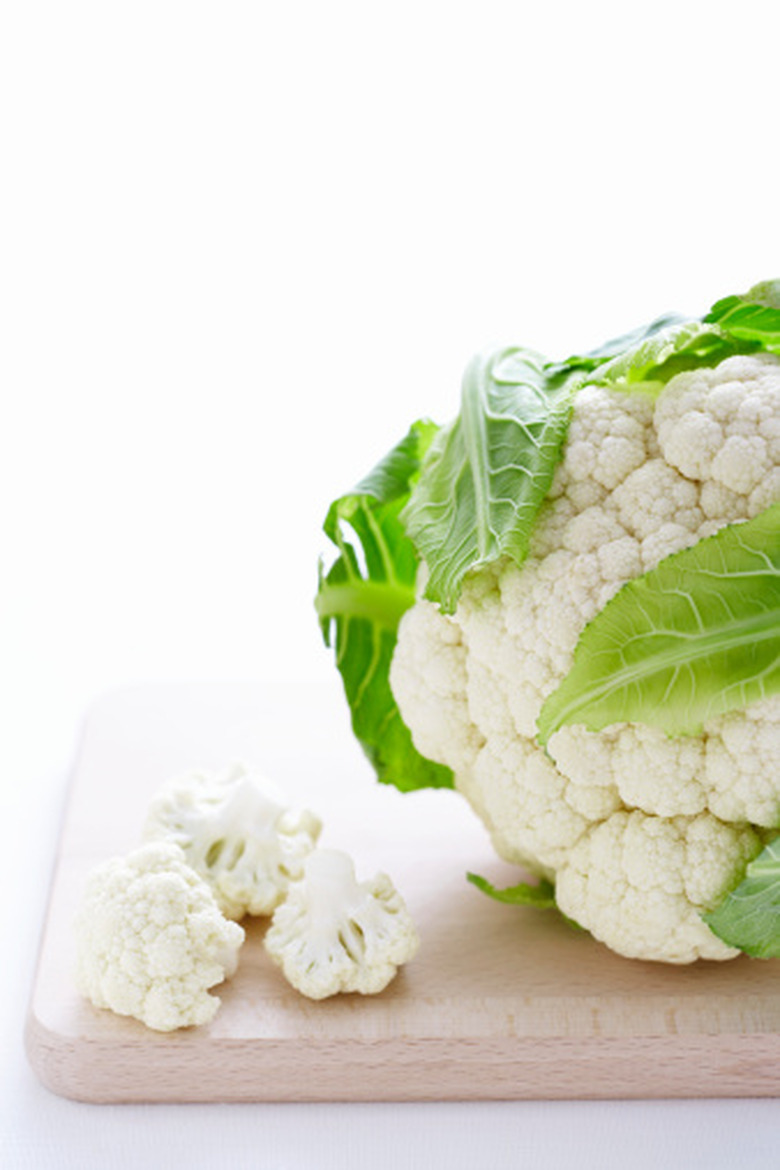What Are Cauliflower Brown Spots?
The most common varieties of cauliflowers are white; the green leaves protect the head from sunlight, which contributes to the white color. There are also light green and purple cauliflowers. The vegetable is a good source of vitamin C and the trace mineral manganese. High fiber content and the sweet almost nutty flavor make cauliflowers a tasty choice for a range of dishes, from vegetable soup to crudités for dipping in sauces.
Cauliflower
Cauliflower belongs to the same plant family as collards, kale, cabbage and broccoli. The four-petal flowers resemble a cross. The compact head, or curd, consists of underdeveloped flower buds attached to a central stalk. The flowers are broken apart into buds, which are cooked, steamed or eaten raw. Look for clean and compact curds where the bud clusters are not separated. Unless you are buying the colored varieties, look for a brilliant white head. Avoid purchasing cauliflower that has small flowers. Cauliflower should smell crisp; if there is a pungent smell it will taste bitter. Soft curds should also be avoided.
- The most common varieties of cauliflowers are white; the green leaves protect the head from sunlight, which contributes to the white color.
Downy Mildew
Cauliflower can be affected by downy mildew (Peronospora parasitica) at any stage of development. The pathogen causes dark brown internal streaks on the cauliflower head, and fluffy white growth can be seen on the underside of the leaves.
Brown Spots
Dark, almost black spots can sometimes be detected on the surface of the cauliflower. These spots are the beginning of spoilage.
Storing Cauliflower
Storing the cauliflower with the stem side down helps prevent moisture forming in the shoot tips. Moisture can cause brown spots in the refrigerator after five to seven days.The shoot tips are commonly referred to as florets, but they are underdeveloped shoot tips.
Kinds Of Cauliflower
Choosing the right type of cauliflower for your garden means you'll get the taste and color you want with varieties that work best for your climate. Most varieties of cauliflowers grow best in cooler temperatures and thrive in U.S. Department of Agriculture plant hardiness zones 3 through 9. Space seedlings 18 to 24 inches apart, leaving about 30 inches between rows. but can also be green, purple or orange. Originating in France, 'Snowball' is a snow-white heirloom variety that was introduced to North America in 1888. It takes approximately 68 days to mature. There are several hybrid cauliflower types which were introduced to take advantage of short growing seasons. Planted later in the season, these hybrids mature as early as 50 days after planting. The "Snow Crow" is another fast grower, reaching maturity 55 days after planting and growing to 7 or 8 inches in diameter. These colorful varieties of cauliflower don't need blanching. Because they take longer to mature, they're often dense and have complex flavors.
- Cauliflower can be affected by downy mildew (Peronospora parasitica) at any stage of development.
